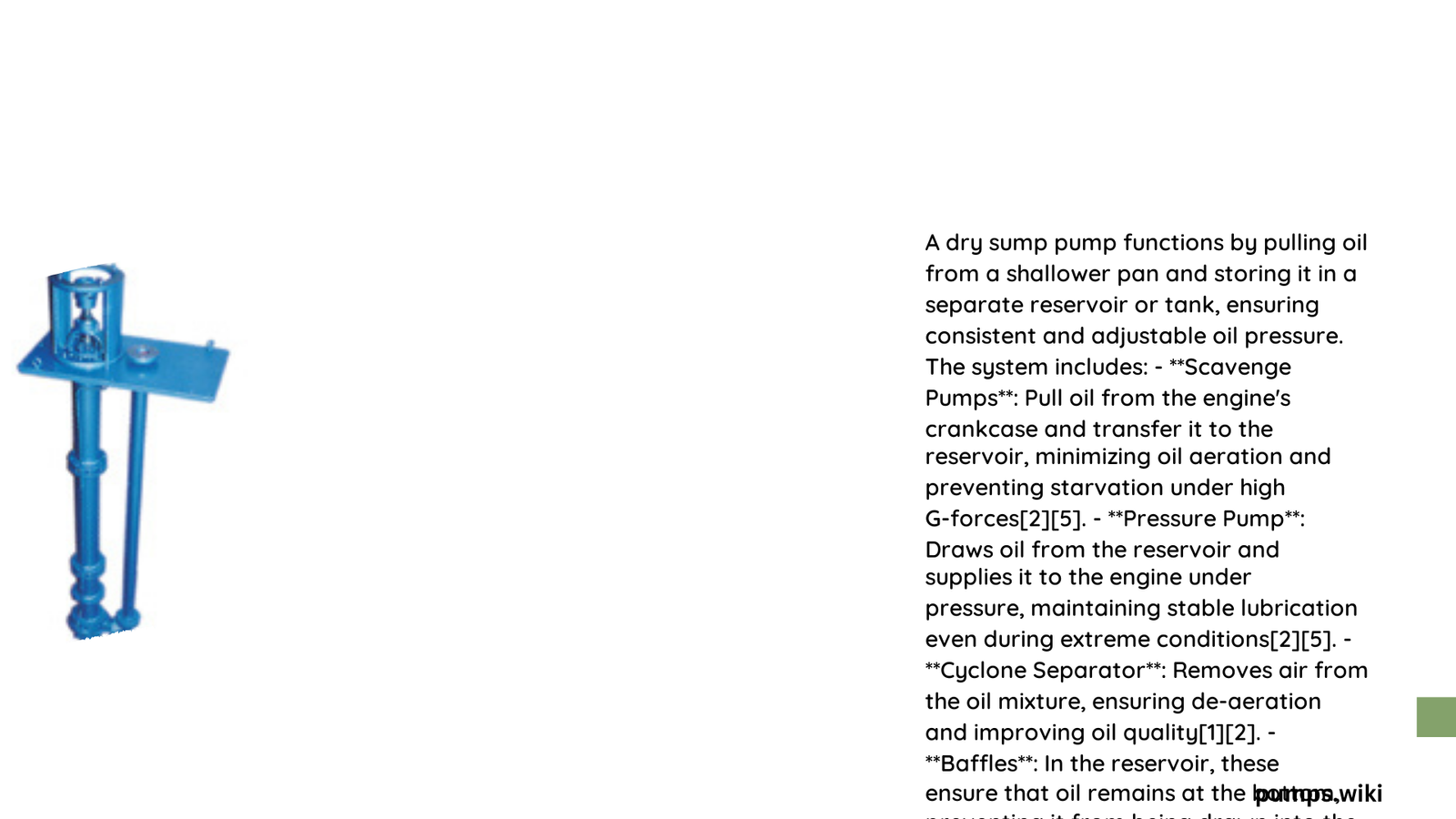A dry sump pump represents a sophisticated engineering solution that transforms engine lubrication by utilizing multiple pumps to manage oil circulation, prevent oil starvation, and maintain consistent pressure during extreme driving conditions. Unlike traditional wet sump systems, this advanced technology ensures optimal oil management through strategic scavenging and pressurization, ultimately improving engine performance, reliability, and longevity across high-stress automotive applications.
What Makes Dry Sump Pump Function Unique?
How Does Oil Circulation Work in a Dry Sump System?
The dry sump pump function operates through a complex multi-pump mechanism designed to address critical lubrication challenges:
Primary Pump Components
- Scavenge Pump: Removes oil from crankcase
- Pressure Pump: Supplies pressurized oil to engine components
- Reservoir Tank: Stores and manages oil circulation
| Pump Type | Primary Function | Key Characteristic |
|---|---|---|
| Scavenge Pump | Remove oil from crankcase | Multiple stages for comprehensive oil extraction |
| Pressure Pump | Supply oil under pressure | Maintains consistent lubrication |
| Reservoir Tank | Oil storage and management | Prevents oil aeration and sloshing |
Why Do High-Performance Engines Require Dry Sump Systems?
High-performance and racing engines demand exceptional lubrication strategies due to extreme operational conditions. The dry sump pump function addresses several critical challenges:
- Prevents Oil Starvation
- Maintains consistent oil supply during high-G maneuvers
- Eliminates oil pooling in crankcase
-
Ensures continuous lubrication under extreme acceleration
-
Reduces Oil Aeration
- Minimizes air mixture with engine oil
- Improves overall lubrication efficiency
-
Prevents potential engine damage
-
**Enhanced Engine Mounting
- Allows lower engine placement
- Improves vehicle center of gravity
- Enables better weight distribution
What Technical Advantages Emerge from Dry Sump Pump Function?
Performance Improvements
- Potential horsepower increase up to 15 HP
- Reduced engine wear
- More consistent oil pressure
- Better thermal management
Structural Benefits
- Shallower oil pan design
- Lower vehicle profile
- Improved chassis aerodynamics
Where Are Dry Sump Systems Most Commonly Applied?
Dry sump pump function finds extensive application in:
– Formula One racing cars
– Professional motorsports
– High-end sports cars
– Performance racing vehicles
– Specialized automotive engineering
How Complex Is Dry Sump Pump Installation?
Installation requires meticulous engineering:
– Precise pump sizing
– Strategic reservoir positioning
– Custom mounting configurations
– Advanced fluid dynamics understanding
What Challenges Exist in Dry Sump System Design?
- Higher initial system cost
- Increased mechanical complexity
- Specialized maintenance requirements
- Precise engineering tolerances
Technical Specifications

Typical Dry Sump Pump Configuration
– 2-4 pump stages
– Dedicated scavenging mechanisms
– Pressure regulation systems
– Advanced filtration components
Conclusion
The dry sump pump function represents a pinnacle of automotive lubrication technology, offering unprecedented performance and reliability for demanding engine environments.
